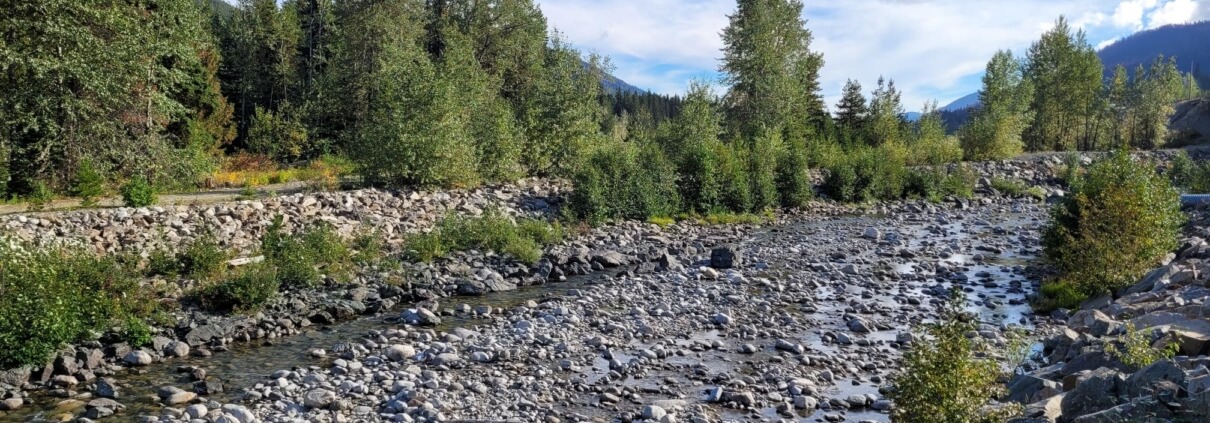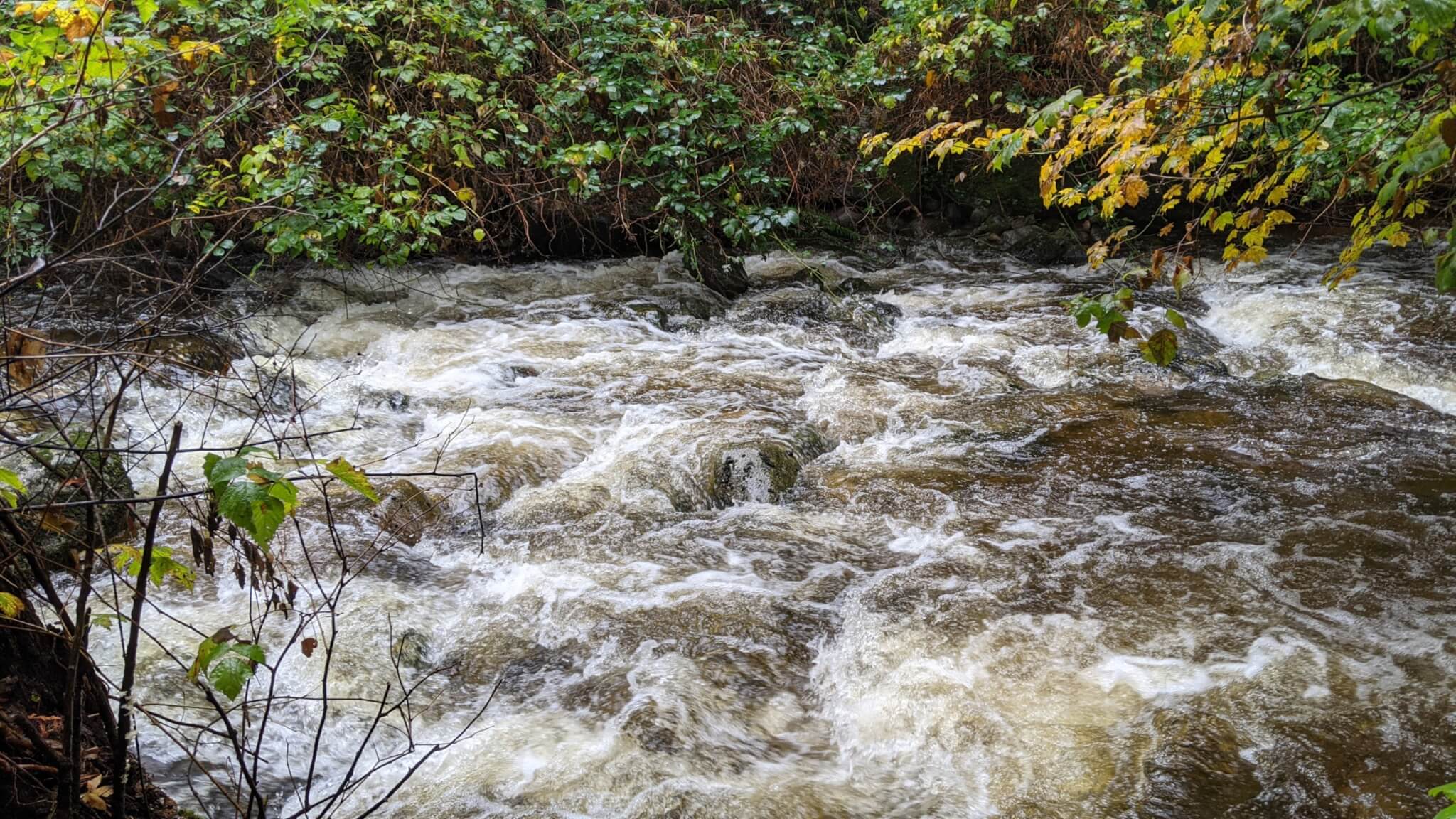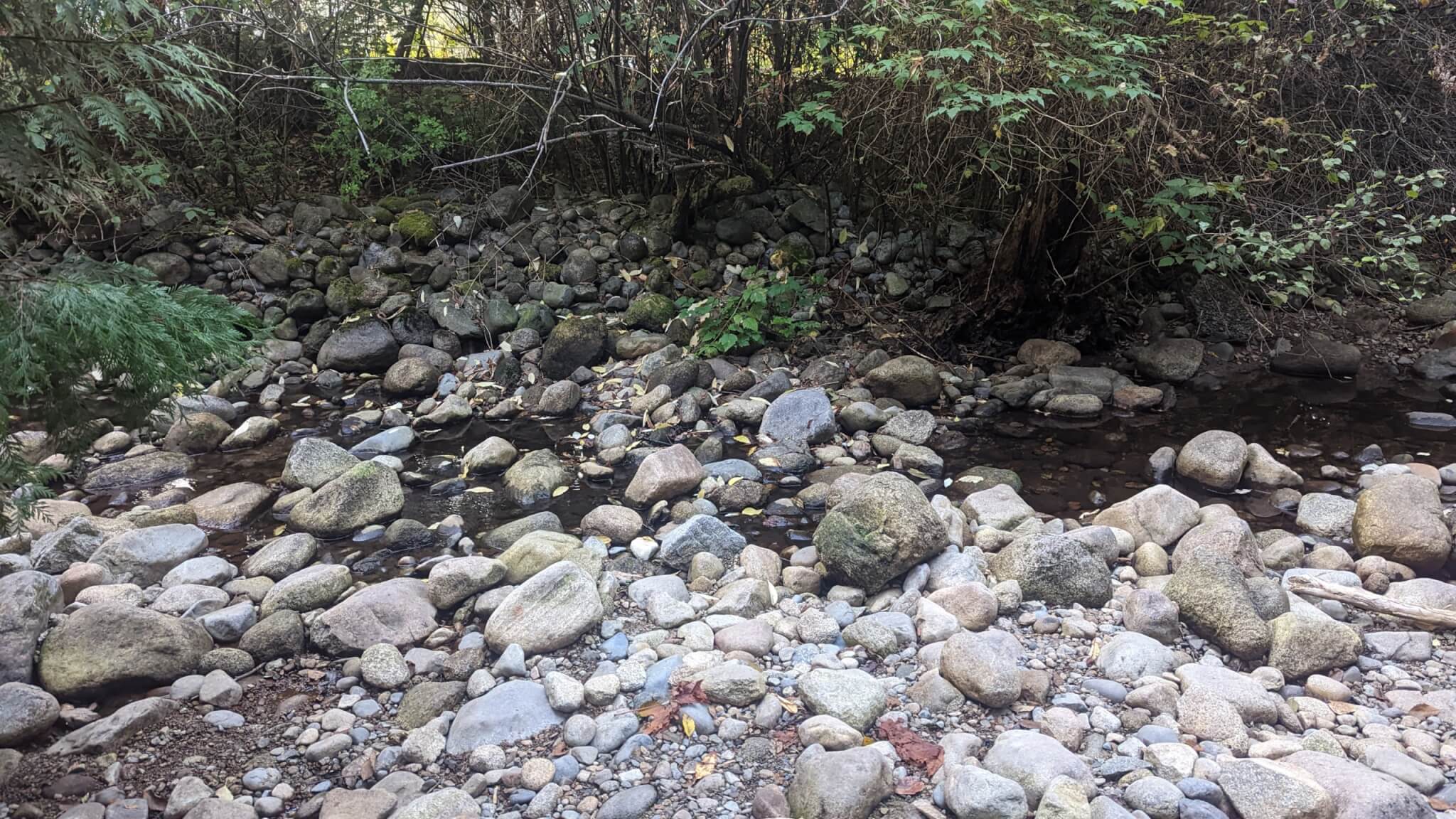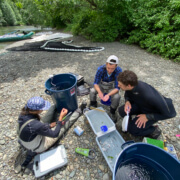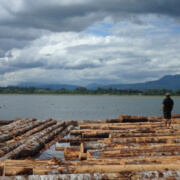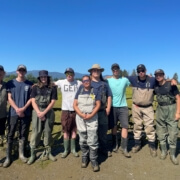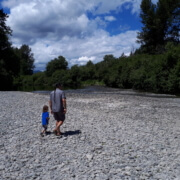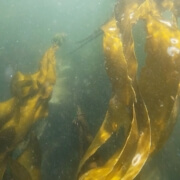Drought effects: warm, dry streams impact salmon migrations
Oct. 07, 2022 (updated with video October 17, 2022)
Article written by Katrina Connors, Director of the Salmon Watersheds Program, Pacific Salmon Foundation
This week, B.C.’s drought conditions continued to worsen with many regions reaching level 4 status, and half of Vancouver Island and portions of the South Coast reaching the most extreme level 5 warnings.
These conditions are causing concern as we enter the peak of the salmon migration season when millions of Pacific salmon begin their migration into the thousands of rivers and streams throughout B.C.
Warm stream temperatures and drought are two major factors that can affect salmon survival and reproductive success.
As warm temperatures extend into October, the unseasonable conditions are outside of what salmon have adapted to. The parched streams and side-channels along rivers are currently unviable habitat for returning adult salmon and juveniles that can spend up to three years in freshwater environments.
A glaring example of this issue, reported by the Globe and Mail, shows tens-of-thousands of stranded pink and chum salmon lying dead in a dry river channel, many of which did not have an opportunity to spawn. For those few salmon that did spawn, their redds became high and dry as the water receded, resulting in a complete die-off for an estimated 65,000 salmon. This event, devastating to an already depressed salmon population, took place in the Neekas Creek, located within Heiltsuk First Nation territory, and part of the Great Bear Rainforest.
Note: This particular Conservation Unit of pink salmon (known as the Hecate Lowlands Pink Even) is already in the “red” status zone based on our 2020 Pacific Salmon Explorer assessment and this die off could have major implications for the viability of this population.
This is Neekas, Heiltsuk Territory. All of these salmon went into the creek, the creek dried up b/c of no rain so far this fall, and just died, and this is just one reach! Global warming is killing everything. This is such a sad scene. Video credit, Sarah Mund pic.twitter.com/vYhEKwD5mN
— William Housty (@WilliamHousty) October 4, 2022
This kind of mass die-off is unusual for this area, but possibly a harbinger of things to come. By all accounts, salmon habitats in the Great Bear Rainforest are relatively pristine and free of the many human pressures (e.g. mining, road development, agriculture) that plague salmon habitats in southern parts of the province. Salmon populations on the Central Coast also have relatively short freshwater migrations as compared to the thousands of kilometers that many salmon populations in the Fraser or the Skeena have to endure. Yet, despite these factors working in their favour, the current drought conditions remind us that salmon across B.C. remain highly vulnerable to the effects of climate change, even those that spawn in temperate rainforests characterized by abundant rainfall.
The story further south in the Lower Mainland bares many similarities. Unlike previous years at this time of year, salmon have not been spotted in many local streams, some of which are currently dry. Salmon are thought to be staging in the ocean, waiting for the rain to trigger their up-river migration and for water temperatures to cool down.
Within the Interior of the Province, the famous Adams River sockeye run is currently delayed, likely because of the lack of rainfall and high-water temperatures. Ultimately, when the weather does cool and the rains arrive, the fish will spawn later than normal potentially delaying the hatching of salmon eggs in the spring. These delays can have knock-down consequences for the survival of the next generation as a later emergence may mean that these juveniles miss optimal windows for accessing abundant food supply.
While faced with these realities of climate change, it’s important to remember that salmon are resilient; they have adapted for thousands of years. While they currently face their biggest challenge yet – climate change – it is critical that we now plan for these conditions with conservation strategies that seek to enhance the resilience of salmon.
We need to stop treating these climate events as emergencies. Climate change is already negatively impacting salmon ecosystems across B.C. and our management systems need to be responsive to the rapid changes unfolding before us.
In the southern parts of the province, where we have competing uses of water – human needs, agriculture, industry – working on better storage systems and not extracting water from streams when salmon need it are two key levers we can pull to help salmon.
In remote areas of B.C., like the Central Coast, this begins with monitoring stream conditions during the summer period so that we can better understand which streams are most likely to be impaired in a drought. This kind of monitoring is key to understanding how future droughts may impact salmon populations. It can also help identify areas that could serve as refuges during extreme conditions, and for strategically protecting salmon habitats that are vulnerable to severe droughts.
And, it’s critical we focus on habitat restoration and protection to provide diverse habitat for salmon that allows them to adapt to changing conditions caused by climate change. By preserving the complexity of habitats, we can give salmon the chance to evolve.
Proactive land and water management can help maintain functioning salmon ecosystems and the natural complexity of salmon habitats that have allowed diverse populations of salmon to evolve over the course of millennia.
Salmon can adapt, they are resilient.

